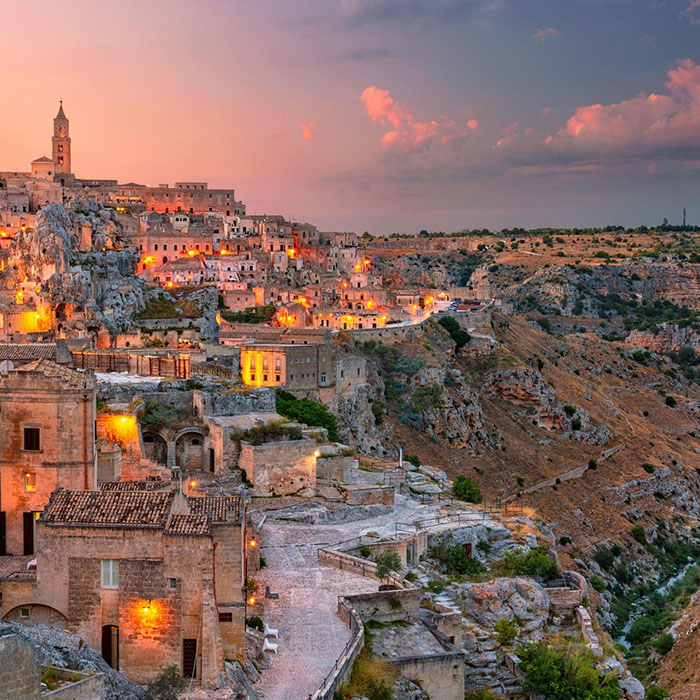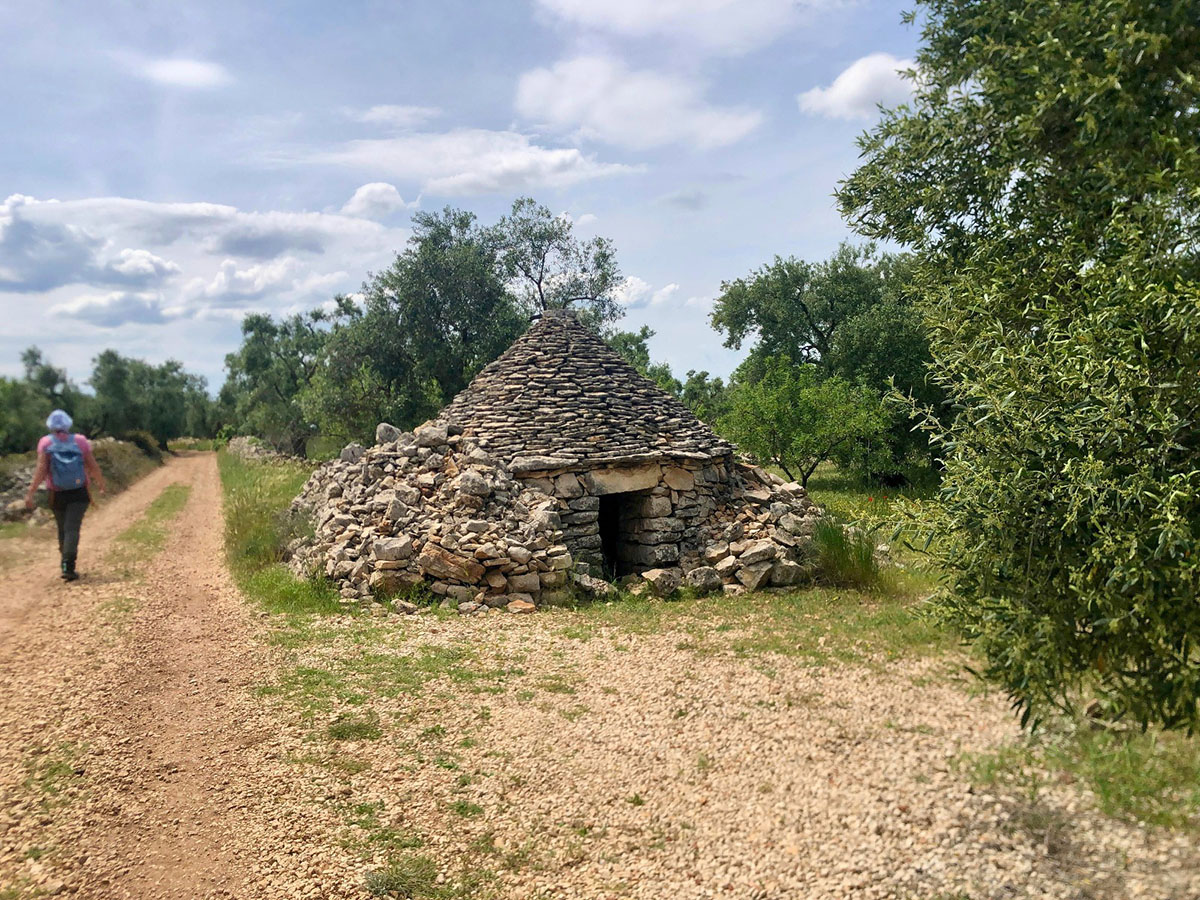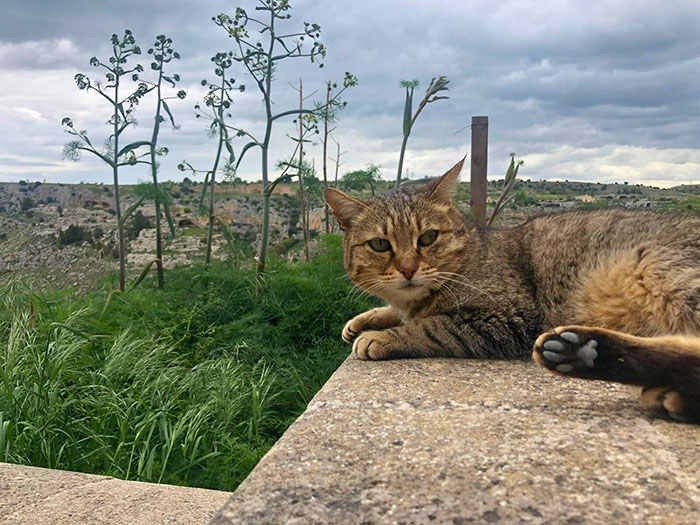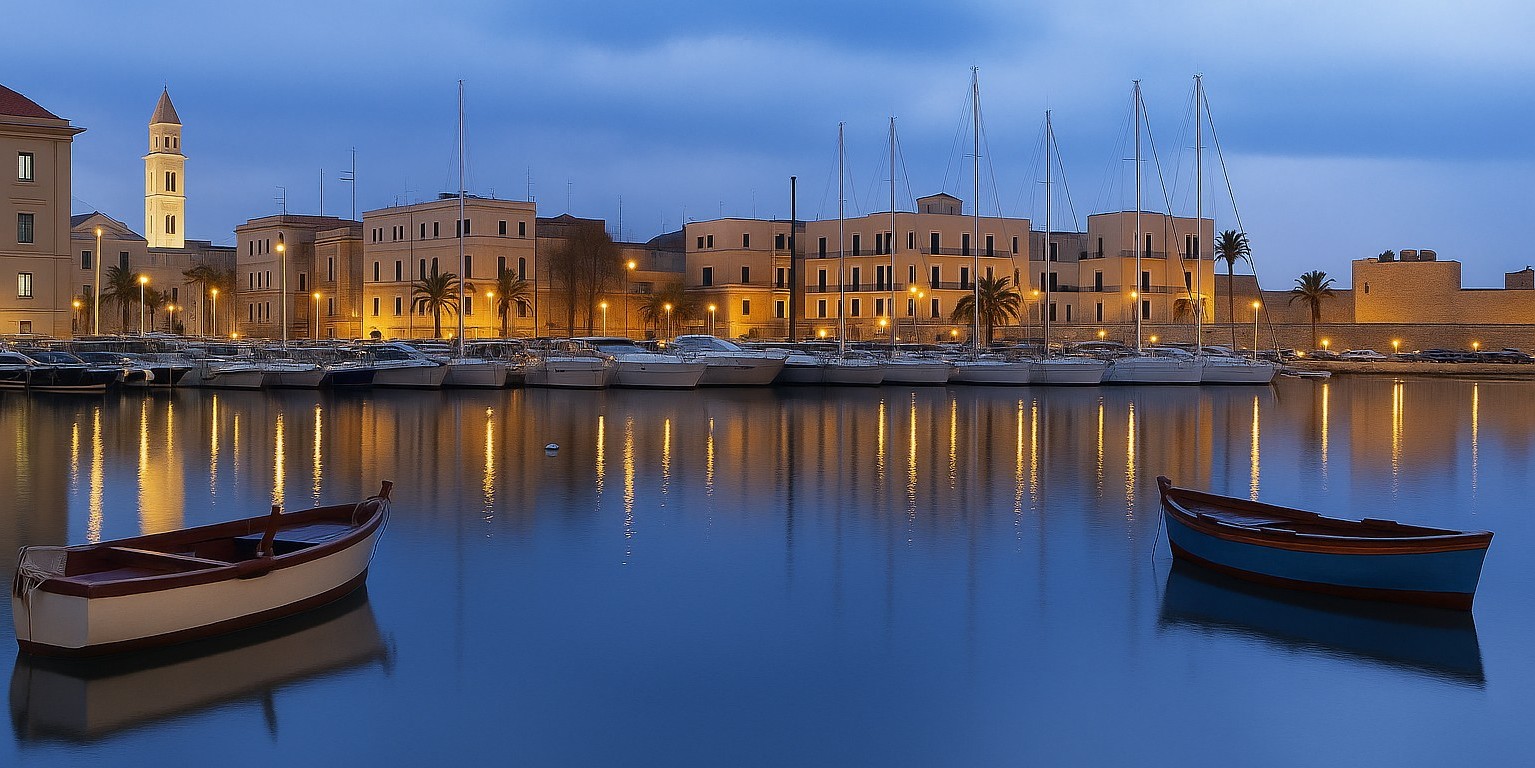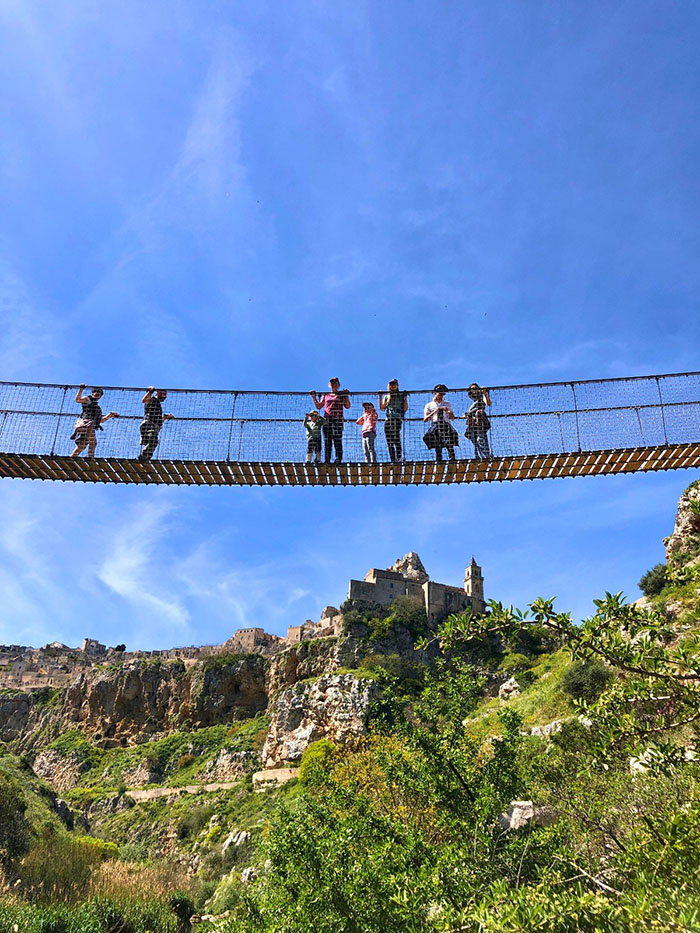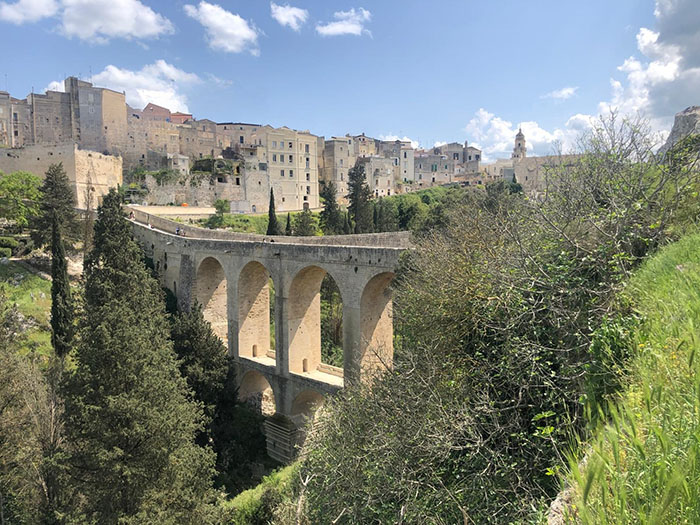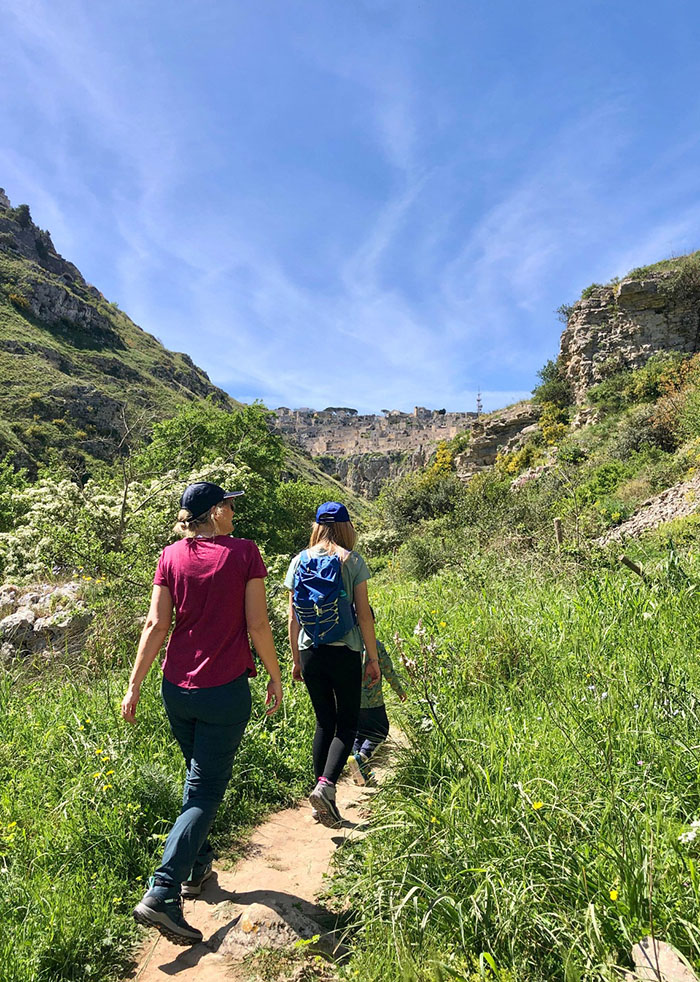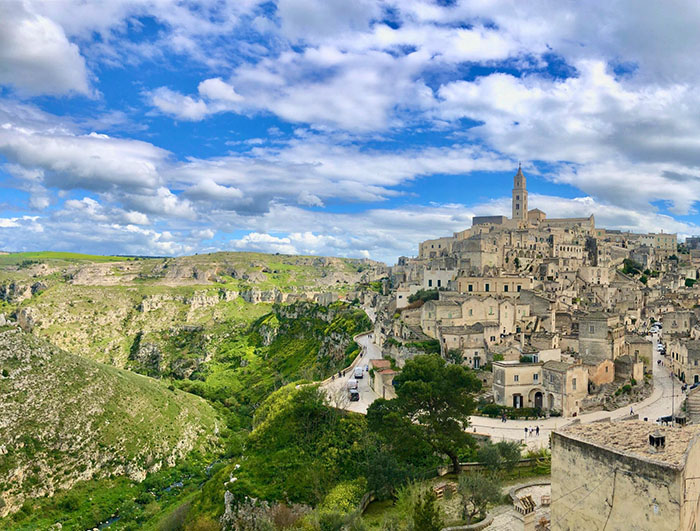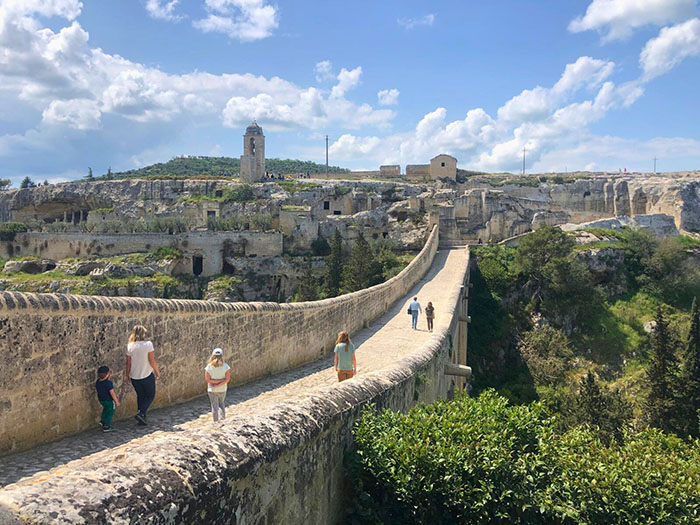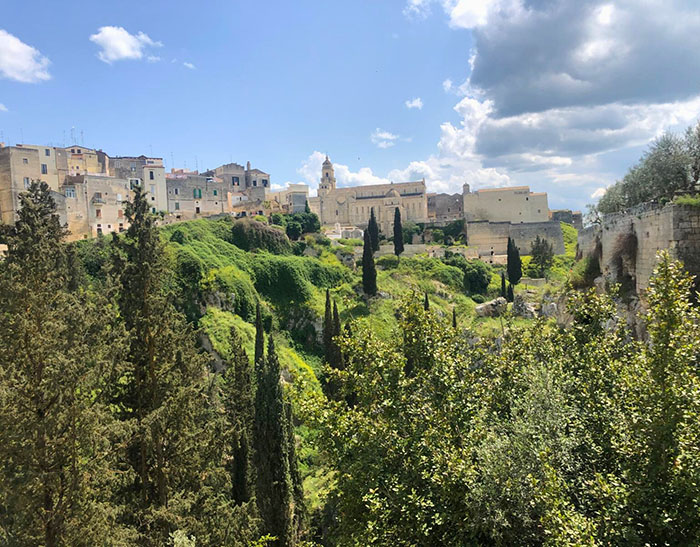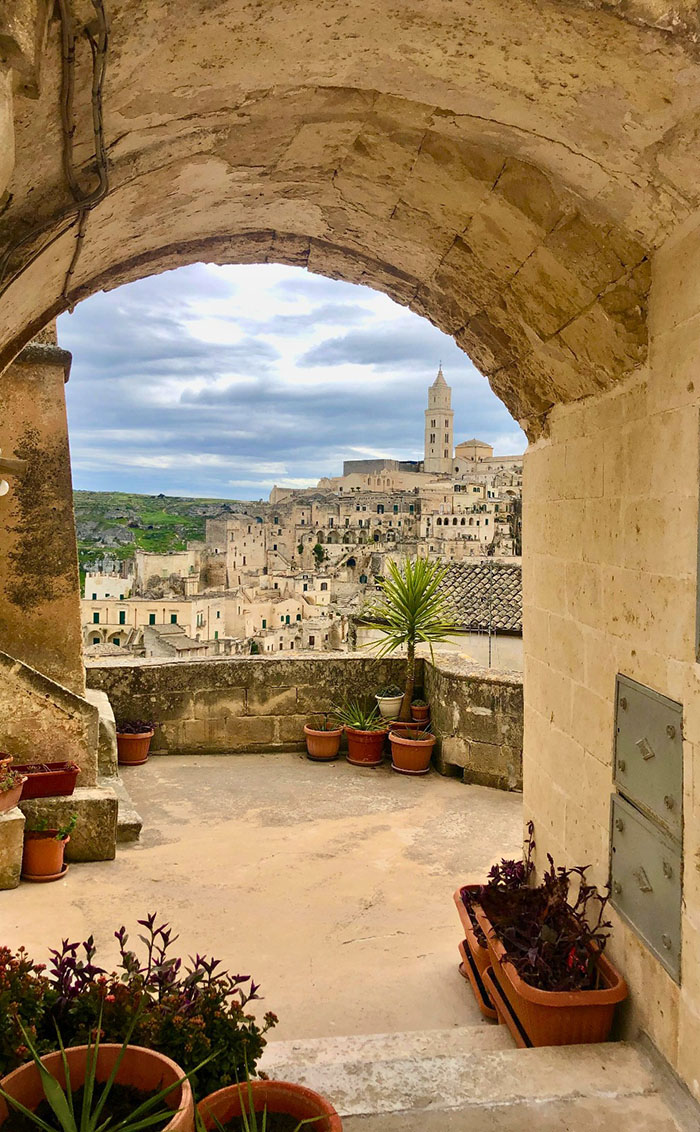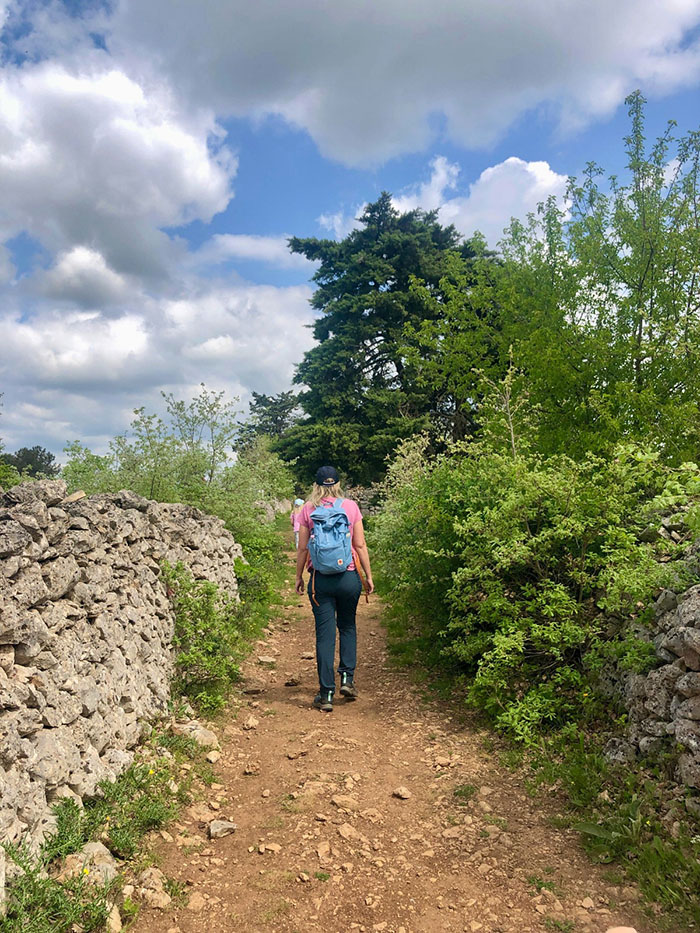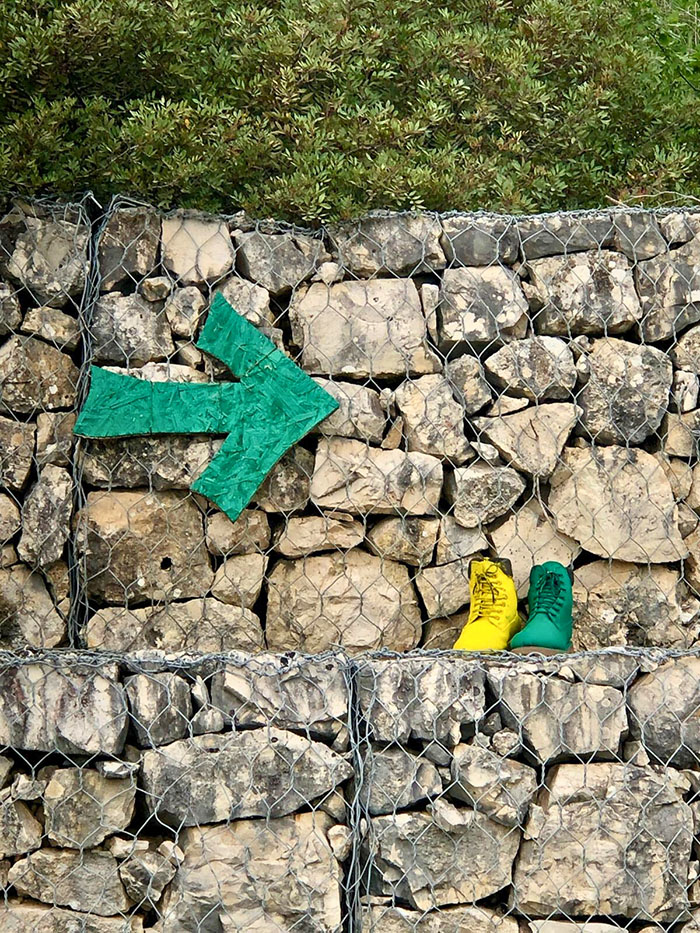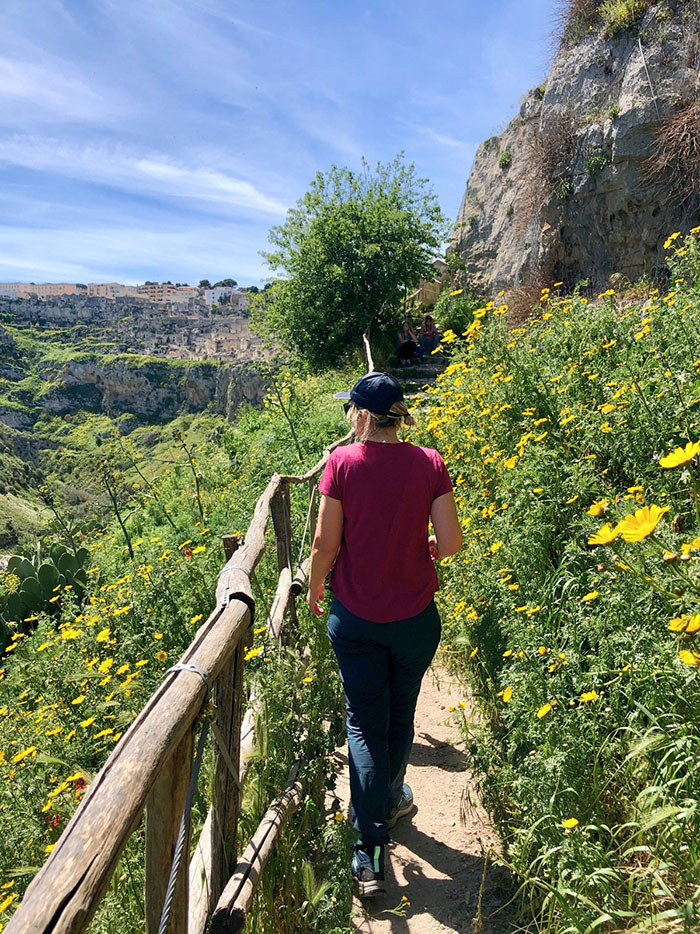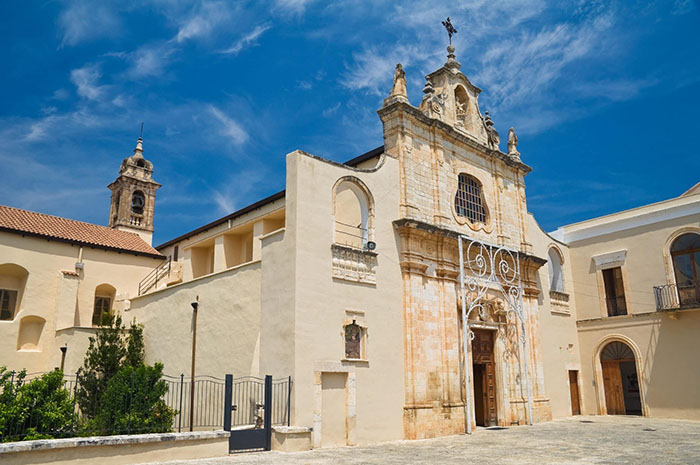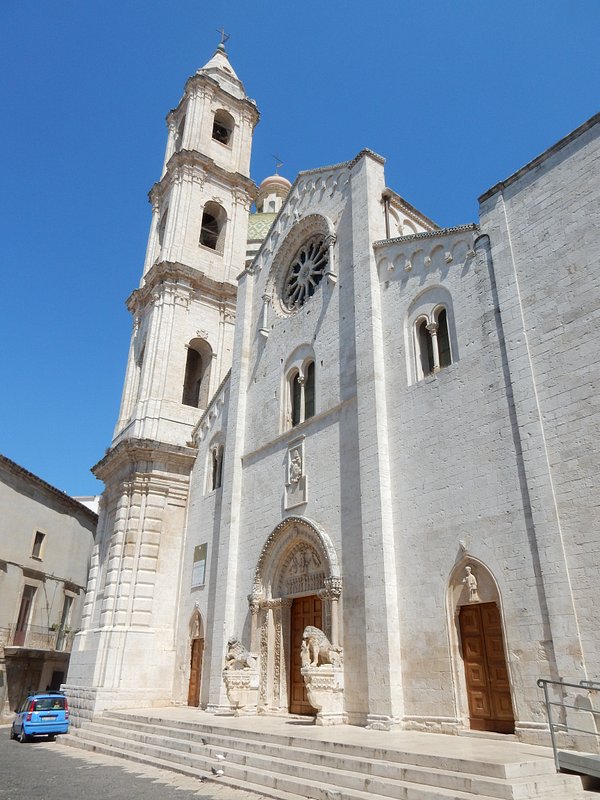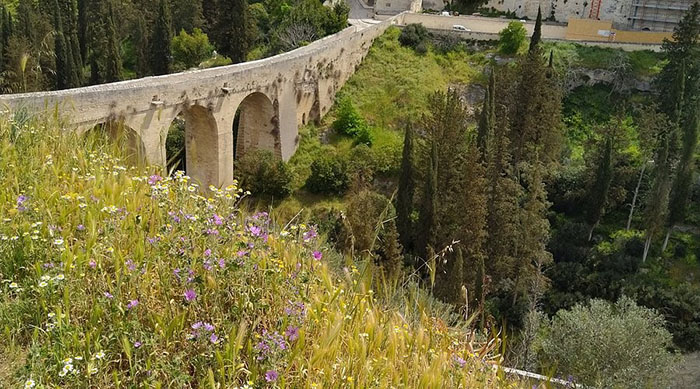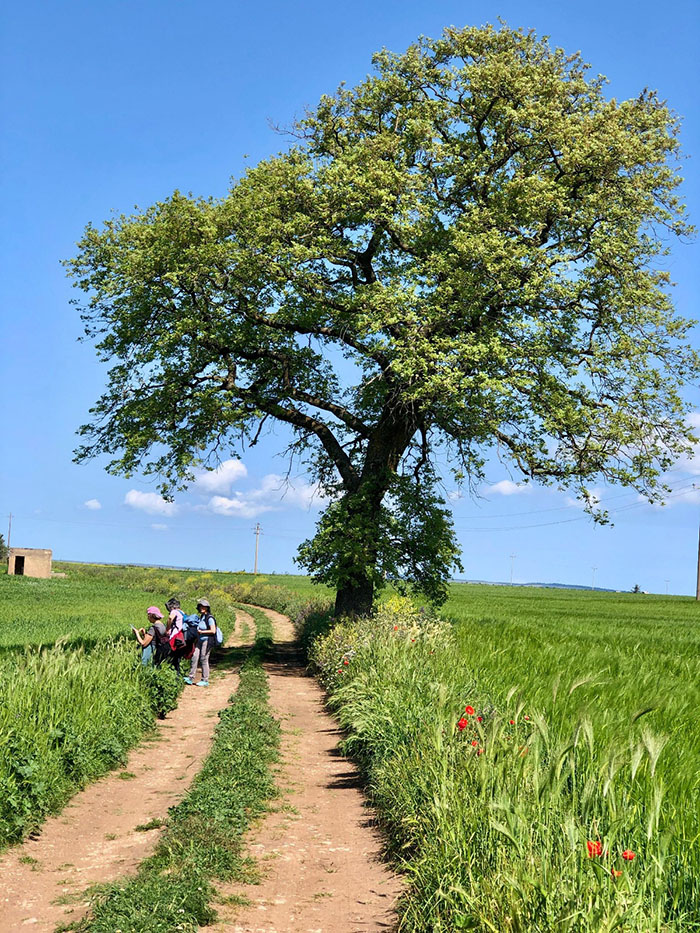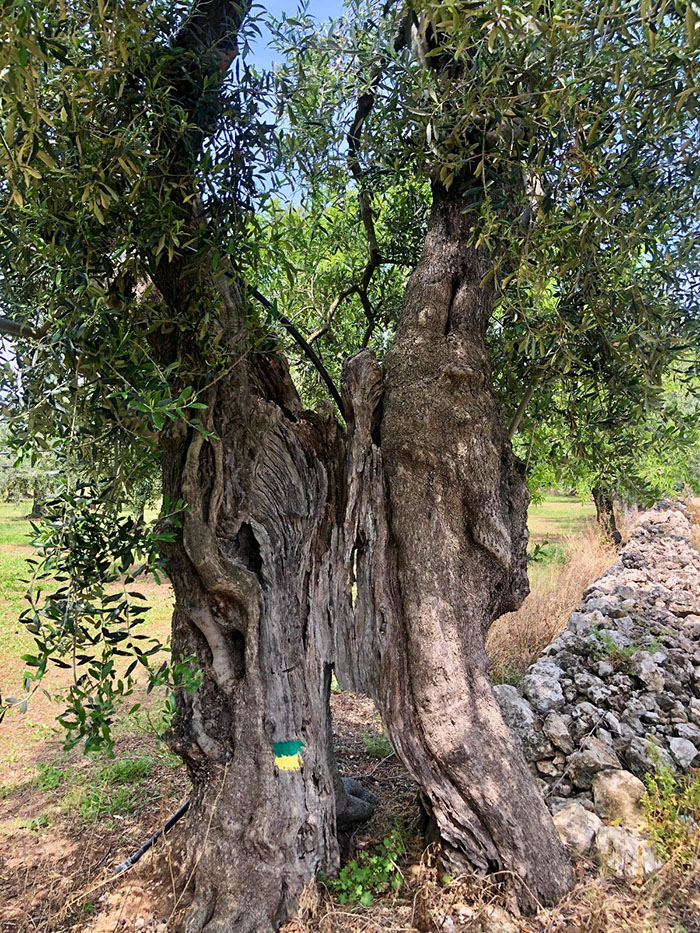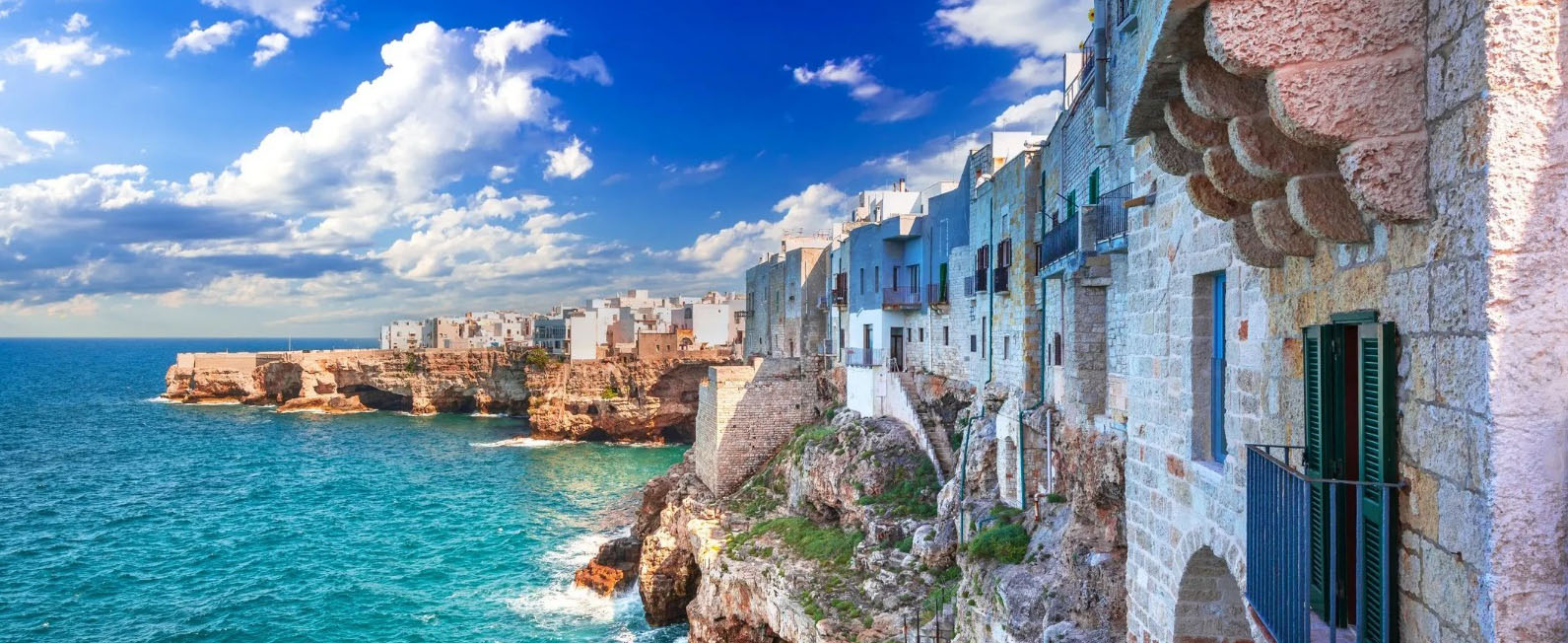
3000 EURO PER PERSON
500 Euro Single Supplement
Discover the Hidden Soul of Southern Italy — Walk the Cammino Materano from Bari to Matera
Step into a land where time slows down, traditions run deep, and every stone tells a story.
This 8-day walking adventure takes you through the heart of Southern Italy, from the vibrant coastal city of Bari to the breathtaking cave city of Matera, one of the oldest continually inhabited places on Earth.
Along the Cammino Materano, we follow ancient shepherd trails and forgotten footpaths that meander through the stunning landscapes of Puglia and Basilicata. Picture yourself strolling beneath centuries-old olive trees, crossing lush wheat fields, and breathing in the fragrant wild herbs on sun-drenched limestone plateaus. Here, the landscape is alive, shaped by wind, water, and history.
We wander through ancient villages and lively hill towns where the warmth of southern hospitality is more than a tradition — it’s a way of life. In Altamura, the “city of bread,” we taste the legacy of centuries-old baking while exploring its Romanesque cathedral and cobbled alleyways. In Gravina, we walk above deep canyons on ancient bridges once used by pilgrims and merchants heading inland from the coast.
And then, as the journey reaches its crescendo, we arrive in Matera — a city carved from stone, suspended in time. Its legendary Sassi, ancient cave dwellings set into the cliffside and inhabited until the 1950s, offer a powerful window into human endurance and ingenuity. Once forgotten, now celebrated, Matera’s haunting beauty has made it a favorite of filmmakers and dreamers alike — from Mel Gibson’s The Passion of Christ to No Time to Die. In 1993, Matera obtained the UNESCO World Heritage status.
This isn’t just a walk. It’s a pilgrimage through living history, where every step connects you more deeply with the land, the people, and the soul of Southern Italy.
Let the Cammino Materano surprise you… Join us.
All hotels, breakfasts, 6 dinners, with wine, van support w/ healthy snacks are included in the tour price.
Itinerary
Day 1: Welcome to Bari, Gateway to the South
As the sun casts its golden light over the Adriatic, we meet at Bari Centrale train station at 4:00 PM, ready to begin our journey into the heart of Italy’s boot heel. A short transfer brings us to our hotel, where we settle in.
The adventure begins with a welcome briefing and a guided stroll through the maze of Bari Vecchia, the old city: a labyrinth of cobblestone alleys, secret courtyards, shrines and laundry lines fluttering above doorways. Here, women still hand-roll orecchiette pasta at the threshold of their homes, and centuries-old churches emerge around every corner. As evening falls, we gather for a delicious dinner in a traditional trattoria, raising a glass to the days of walking, wonder, and discovery ahead.
Day 2: Bitetto to Cassano delle Murge, 25 km
After breakfast, a short transfer brings us to the village of Bitetto, the official start of our walking journey. A quiet town with white limestone streets and a beautiful Romanesque cathedral, Bitetto is our portal into a slower, more soulful Italy.
We step into the rhythm of the Cammino as we follow ancient masserie trails, walking through a mosaic of centuries-old olive groves, oak woodlands, rolling pastures, and fields of wild fennel and thyme. Along the way, the dry-stone walls guide our steps, echoing stories of shepherds and farmers who have walked this land for generations. As we gently climb onto the Murgia plateau, the landscape opens into wide horizons and fragrant Mediterranean scrub.
We finally reach Cassano delle Murge, a lively town nestled at the edge of the Alta Murgia National Park, where we spend the night.
Day 3: Cassano delle Murge to Santeramo in Colle, 22 km
Today’s route traverses the heart of the Murge plateau, a karst landscape marked by rugged limestone formations, deep dolines, and sparse Mediterranean vegetation adapted to dry conditions. The terrain shifts between open rocky fields and patches of hardy shrubs like juniper and wild thyme.
You’ll pass by traditional sheepfolds (pagliare) made of stone, used for centuries by shepherds, and catch panoramic views over the rolling hills of Apulia. The trail reveals signs of ancient human presence, from prehistoric caves to medieval dry wells (cunicoli).
Day 4: Santeramo in Colle to Altamura, 22.9 km
Leaving Santeramo behind, we descend gently through open fields framed by ancient boundary walls and lone oak trees, stepping into a landscape shaped by millennia of rural life. The way winds past abandoned farms, centuries-old cisterns, and wide stretches of limestone terrain once used as transhumance routes. We pause at the Grotta di Sant’Angelo, a rocky sanctuary layered with centuries of devotion witnessed by thousands of ancient inscriptions and medieval frescos. Approaching Altamura, the terrain becomes softer and fertile, wheat fields and almond groves usher us into this storied town.
Famous for its DOP-certified bread, Altamura also offers elegant architecture with a captivating blend of Romanesque, Gothic and Baroque facades and buildings, including the majestic Cathedral built by Emperor Fredrick II.
Day 5: Altamura to Gravina in Puglia, 22.9 km
Leaving the stone alleys of Altamura behind, we head westwards across gentle hills and wheat fields that have fed this region for centuries. Old tratturi (drover’s roads) still guide seasonal flocks across the plateau, where the panoramic ridgeline reveals the first outlines of Basilicata on the horizon. We descend towards Gravina in Puglia, a city sitting on the edge of a deep canyon carved by the river and inhabited since Paleolithic times. This unique blend of geology and human history gives the town its unmistakable character: humble, raw, and layered with memory. Gravina’s name derives from the Latin grava (rocky ravine), but the name also inspired the Latin motto inscribed on the city’s gonfalon: Grana dat et vina – “It yields grain and wine”. Indeed, Gravina is still known for its flavorful durum wheat bread and its crisp, aromatic Verdeca wine, obtained from a local grape cultivated in the surrounding hills.
Day 6: Gravina in Puglia to Bosco Difesa Grande, 20 km
We leave Gravina with a dramatic send-off, crossing the Ponte Acquedotto Madonna della Stella, an awe-inspiring aqueduct bridge that spans the deep ravine carved by the torrent. As we step across its stone arches, the view opens over cave dwellings, rock-hewn churches, and ancient grain mills etched into the canyon walls below. On the far side of the bridge, the path unfolds into a landscape of open valleys, while midway through the stage the terrain begins to change. We enter the Bosco Difesa Grande, one of the largest natural forests in southern Italy. This vast protected woodland of downy oaks, Italian maples, manna ashes, Turkey oaks and black hornbeams offers welcome shade and a complete shift in atmosphere creating a welcome contrast to the exposed plateau. We conclude the day at the southern exit of the forest, where the ancient trees give way to the open sky. A short transfer takes us to our accommodation for the night.
Day 7: Approaching Matera, 7 km.
Our day begins on the panoramic road known as Strada Belvedere, where the entire stone city of Matera rises before us like a dream suspended in time. From this vantage point, we descend into the ancient ravine, tracing shepherd paths and trails that have led to the city for millennia. The trail winds through the Parco della Murgia Materana, a protected landscape of stark limestone cliffs and wild Mediterranean flora. We pause at the rock-hewn church of San Nicola alla Murgia, its frescoes faded but powerful, before reaching the Neolithic village of Murgia Timone, where traces of prehistoric life remain etched into the plateau. Further on, we pass the churches of San Vito and Madonna delle Tre Porte, once home to hermits and monks, now silent sentinels of devotion and solitude. Crossing the bridge that spans the Gravina, we enter Matera through the ancient district of Sasso Caveoso — a labyrinth of cave dwellings, stairways, and carved facades that whisper stories of hardship and resilience. We climb through the stony maze until we reach the Cathedral of Santa Maria della Bruna, standing high on the ridge like a beacon of arrival. Our Cammino ends here — but something deeper continues.
Day 8: Farewell in Matera – Exploring the Stone Soul of Southern Italy
After seven days of walking through the heart of Puglia and Basilicata, we now take the time to fully absorb the wonder of our final destination: Matera. This morning, a guided walking tour leads us through the ancient Sassi districts — a UNESCO World Heritage site unlike any other. We trace the city’s millennia-old history carved into stone, from prehistoric cave dwellings to medieval rock-hewn churches, cisterns, and noble palazzi built atop the cliffs. We visit iconic sites like the Cathedral of Matera, the frescoed cave churches of Madonna de Idris and Santa Lucia alle Malve, and panoramic terraces overlooking the gorge we crossed just yesterday. As we stroll through the labyrinth of narrow alleys and stairways, stories come alive. By midday, the guided visit concludes, and the rest of the day is yours. Whether you choose to explore further, shop for local crafts, or simply relax with a view and a glass of Aglianico, this final chapter is yours to savor.
* This itinerary may change slightly due to accommodation availability, rain, festivals, and spontaneous side trips.
** You will see the number of kilometers and elevation mentioned with the daily description. We are flexible in the amount you personally walk. We have the van to assist in whatever amount you would like to walk on this pilgrimage.
*** This is not an endurance race, nor a competition. Please be respectful of all the different paces and walks of life that come together on this group trip.
Location
FAQs
How many miles do we hike per day?
We average between 7-25 kilometers per day. We encourage people to ride in the van if feeling fatigued. Most pilgrims walking the trail independently walk at least 25 kilometers per day with a heavy pack. With Spanish Steps, we have the luxury of a fully supported van, which carries our baggage and carries us the extra mile when needed.
What kind of hotels do we use?
We use beautifully restored farmhouses known as Agriturismi and beautiful hotels in towns, mostly historical buildings and former noble palaces. Sometimes we spend 2 nights at the same hotel, avoiding the nuisance of packing every day: this involves a short group transfer at the beginning and end of the day. All rooms have private bathrooms. The smaller inns have no phone or TV in the room.
Is there WIFI at our hotels?
Our hotels nearly always have free WIFI available although it is often just in the lobby / public areas. We generally stay at historical hotels, which often have thick walls, so WIFI rarely works in the rooms. Most bars and cafes enroute have free WIFI also.
How many meals are included?
All continental breakfasts and six dinners with wine and water are included in the price of this tour. Our hotels are happy to provide a vegetarian option should it be required. Lunches and ONE dinner will be at your own expense. There are shops along the trail to purchase sandwich items and fruit, or plan to eat at one of the cafes or restaurants along the way. The van will be stocked with healthy snacks and water. If you have any dietary restrictions, be sure to let us know what they are before the start of this trip.
How does one get to BARI?
- Most of our guests arrive in Italy via Rome Fiumicino (FCO). To reach the southern area of the peninsula you can also fly to Naples International Airport (NAP). While there is a direct flight from New York (JFK) to Bari (BRI) operated seasonally by Neos Air, it runs infrequently — so we generally recommend flying into Rome or Naples for greater flexibility..
- T From either Rome or Naples, you can reach Bari by domestic flight (about 1–1.5 hours), or high-speed train to Bari Centrale — approximately 4 hours from Rome or 3.5 hours from Naples.
- Train schedules and tickets are available at: www.trenitalia.com.
What kind of equipment should I pack?
The hikes are not fancy. I will supply you with an equipment list of basic items to pack. You are limited to one bag weighing 30-lbs and a one-day pack to hold items such as your camera, rain gear and water bottle. Hiking boots will be your most important piece of equipment and we recommend packing them in your hand luggage or wearing them during flight. Please be sure they are well broken in and that you have proper socks before arriving in Italy. Please bring hiking poles with you if you wish to use them.
How do I access spending money/how much should I bring?
Most people travel with an ATM card. Money machines are everywhere in Italy but be sure you know your PIN number before departing the US. Please make sure that your card is active in Italy. Most expenses are already built into Spanish Steps trips.
Should I leave a gratuity for our guides?
Our guests often ask for guidelines on tipping tour guides. For an 8-day tour, a tip of around 80-100 Euros per guest for each guide is appropriate if you are pleased with their service: or about 10 Euros per day, per guide.
What is the average age of the group?
The average age of the hiker on a Spanish Steps tour is 50 years old during the spring and fall months but younger during the summer months. Most trips are a mix of a 40/60 ratio of men to women. I have taken school groups where the age range is 13-20 years old. With an eager heart and a mind full of curiosities, any age is able to walk our trails.
What is the terrain like?
The trails along the Via Peuceta from Bari to Matera are well marked with green and yellow bands and the Cammino Materano trail signs. The terrain is varied and rewarding. You’ll walk on a mix of gravel paths, country roads, ancient shepherds’ trails (tratturi), and forested areas.
Most of the route features gentle rolling hills, with daily elevation gains of 200–400 meters (650–1,300 feet). The highest points are around Santeramo in Colle and Altamura, while the final stage includes a scenic descent through the Murgia Materana Park, crossing a dramatic ravine to reach Matera.
The hike is generally moderate / easy but expect some rocky sections, and moderately long walking days.
Is there a single supplement?
Some people would like to be matched with a roommate. I can’t guarantee a match but will try to place you with someone if there are any requests. The price of the single supplement is 500 EUROS per person.
Can you provide references?
We would be delighted to share with you some references of former clients who have walked with us. If you would like to contact any former Spanish Steps participants, let us know by calling us. Check out our Customer Comments on our website at www.spanishsteps.com. Buon Viaggio!

